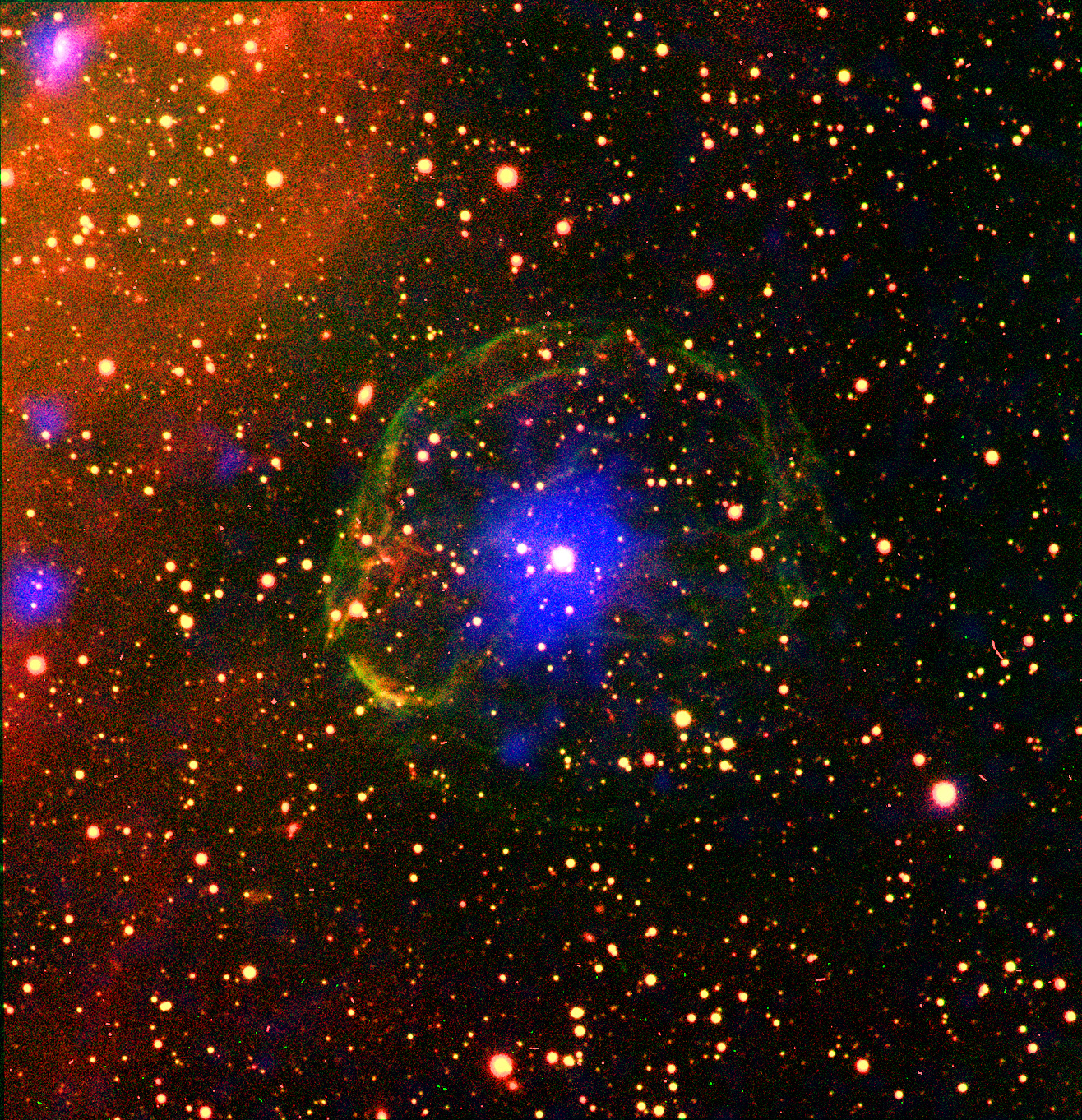Rare Slow-Spinning Star Reveals Space Oddity

Astronomers have discovered a strange spinning star that appears to be older than the explosion that gave birth to it, scientists say.
The star is a pulsar, a rotating, super-dense core left behind after a massive star goes supernova. This pulsar, known as SXP 1062, is spinning quite slowly, suggesting an advanced age.
But the pulsar can't be as old as it looks, because the star probably exploded less than 40,000 years ago, researchers said. They've just now begun delving into this newly discovered cosmic mystery.
A pulsar is born
Pulsars are created after supernova explosions, when a star's remnant collapses and becomes so dense that protons and electrons squish together to form neutrons. [Supernova Photos: Great Images of Star Explosions]
Conservation of angular momentum causes these newly formed, city-size neutron stars to rotate, often extremely rapidly. They're called pulsars because this rotation makes their light appear to pulse at regular intervals.
Astronomers feel fortunate to have detected SXP 1062.
Breaking space news, the latest updates on rocket launches, skywatching events and more!
"Not many pulsars have been observed within their supernova remnant, and this is the first clear example of such a pair in the [Small Magellanic Cloud]," study leader Vincent Hénault-Brunet, of the University of Edinburgh in the United Kingdom, said in a statement.
The Small Magellanic Cloud is one of the satellite galaxies of the Milky Way.
A second team, led by Frank Haberl of the Max-Planck Institute in Germany, independently confirmed Hénault-Brunet's findings that the leftover supernova debris is between 10,000 and 40,000 years old.
A cosmic mystery
Hénault-Brunet's international team used NASA's Chandra space telescope and the European Space Agency's XMM-Newton observatory to spot X-rays emitted by SXP 1062.
Most pulsars spin extremely rapidly, with some of them making hundreds of revolutions per second. But SXP 1062 is spinning just once every 18 minutes or so.
"The most interesting aspect of this pulsar is possibly its extremely long period — 1,062 seconds — which makes it one of the slowest pulsars on record," said Lidia Oskinova, of Germany's Institute for Physics and Astronomy, who worked with Hénault-Brunet.
"Slowly spinning pulsars are particularly difficult to detect," Oskinova added. "Only a few with periods longer than a few thousand seconds have been observed to date."
Since pulsars slow down as they age, SXP 1062's sluggish rotation seems to imply an advanced age, in contrast to the supernova remnant that surrounds it.
"Extremely slow rotation in pulsars normally points to old objects — something that doesn't quite agree in this case with the fairly young age of the supernova remnant," Oskinova said.
Did something cause SXP 1062 to decelerate faster than normal? Was it born with a slower spin than other pulsars? These questions remain unanswered, but the solution could lie within the information already collected, researchers said.
"Our plan is to fully mine the X-ray data to study the system's variability in greater detail, and further study the optical spectra to investigate the properties of the companion star," Oskinova said. "We can't wait to see what the data tells us."
The results will be published in the January edition of the journal Monthly Notices of the Royal Astronomical Society.
Follow SPACE.com for the latest in space science and exploration news on Twitter @Spacedotcom and on Facebook.

Nola Taylor Tillman is a contributing writer for Space.com. She loves all things space and astronomy-related, and always wants to learn more. She has a Bachelor's degree in English and Astrophysics from Agnes Scott College and served as an intern at Sky & Telescope magazine. She loves to speak to groups on astronomy-related subjects. She lives with her husband in Atlanta, Georgia. Follow her on Bluesky at @astrowriter.social.bluesky
